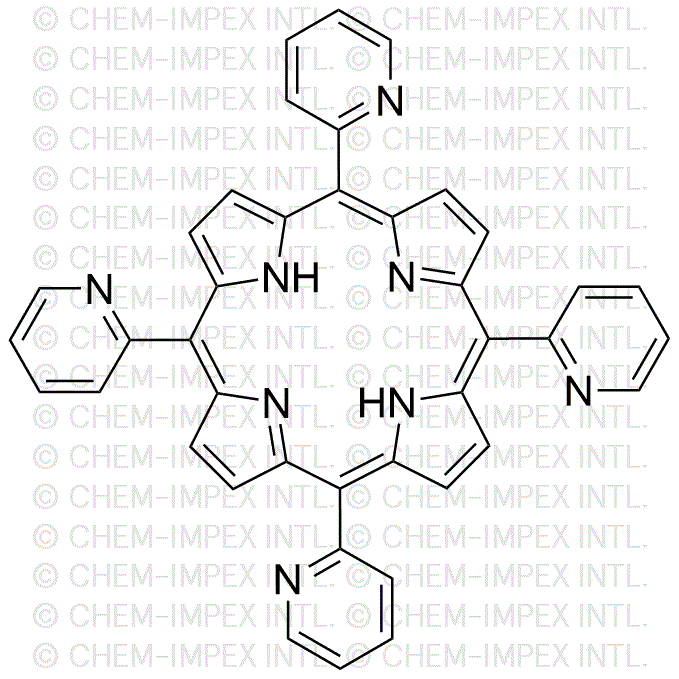5,10,15,20-(Tetra-2-pyridyl)porphyrin is widely utilized in research focused on:
- Photodynamic Therapy: This compound is effective in targeting cancer cells, making it a promising agent in photodynamic therapy, where light activation leads to cell destruction.
- Solar Energy Conversion: Its unique structure allows for efficient light absorption, enhancing the performance of solar cells and contributing to renewable energy solutions.
- Catalysis: Used as a catalyst in various chemical reactions, it facilitates processes in organic synthesis, improving yields and reducing reaction times.
- Sensor Development: The compound's properties make it suitable for developing sensors that detect environmental pollutants, aiding in monitoring and regulatory compliance.
- Biochemical Research: In studies of enzyme activity and protein interactions, it serves as a valuable tool for understanding biological mechanisms, providing insights into disease pathways.
General Information
Properties
Safety and Regulations
Applications
5,10,15,20-(Tetra-2-pyridyl)porphyrin is widely utilized in research focused on:
- Photodynamic Therapy: This compound is effective in targeting cancer cells, making it a promising agent in photodynamic therapy, where light activation leads to cell destruction.
- Solar Energy Conversion: Its unique structure allows for efficient light absorption, enhancing the performance of solar cells and contributing to renewable energy solutions.
- Catalysis: Used as a catalyst in various chemical reactions, it facilitates processes in organic synthesis, improving yields and reducing reaction times.
- Sensor Development: The compound's properties make it suitable for developing sensors that detect environmental pollutants, aiding in monitoring and regulatory compliance.
- Biochemical Research: In studies of enzyme activity and protein interactions, it serves as a valuable tool for understanding biological mechanisms, providing insights into disease pathways.
Documents
Safety Data Sheets (SDS)
The SDS provides comprehensive safety information on handling, storage, and disposal of the product.
Product Specification (PS)
The PS provides a comprehensive breakdown of the product’s properties, including chemical composition, physical state, purity, and storage requirements. It also details acceptable quality ranges and the product's intended applications.
Certificates of Analysis (COA)
Search for Certificates of Analysis (COA) by entering the products Lot Number. Lot and Batch Numbers can be found on a product’s label following the words ‘Lot’ or ‘Batch’.
*Catalog Number
*Lot Number
Certificates Of Origin (COO)
This COO confirms the country where the product was manufactured, and also details the materials and components used in it and whether it is derived from natural, synthetic, or other specific sources. This certificate may be required for customs, trade, and regulatory compliance.
*Catalog Number
*Lot Number
Safety Data Sheets (SDS)
The SDS provides comprehensive safety information on handling, storage, and disposal of the product.
DownloadProduct Specification (PS)
The PS provides a comprehensive breakdown of the product’s properties, including chemical composition, physical state, purity, and storage requirements. It also details acceptable quality ranges and the product's intended applications.
DownloadCertificates of Analysis (COA)
Search for Certificates of Analysis (COA) by entering the products Lot Number. Lot and Batch Numbers can be found on a product’s label following the words ‘Lot’ or ‘Batch’.
*Catalog Number
*Lot Number
Certificates Of Origin (COO)
This COO confirms the country where the product was manufactured, and also details the materials and components used in it and whether it is derived from natural, synthetic, or other specific sources. This certificate may be required for customs, trade, and regulatory compliance.


